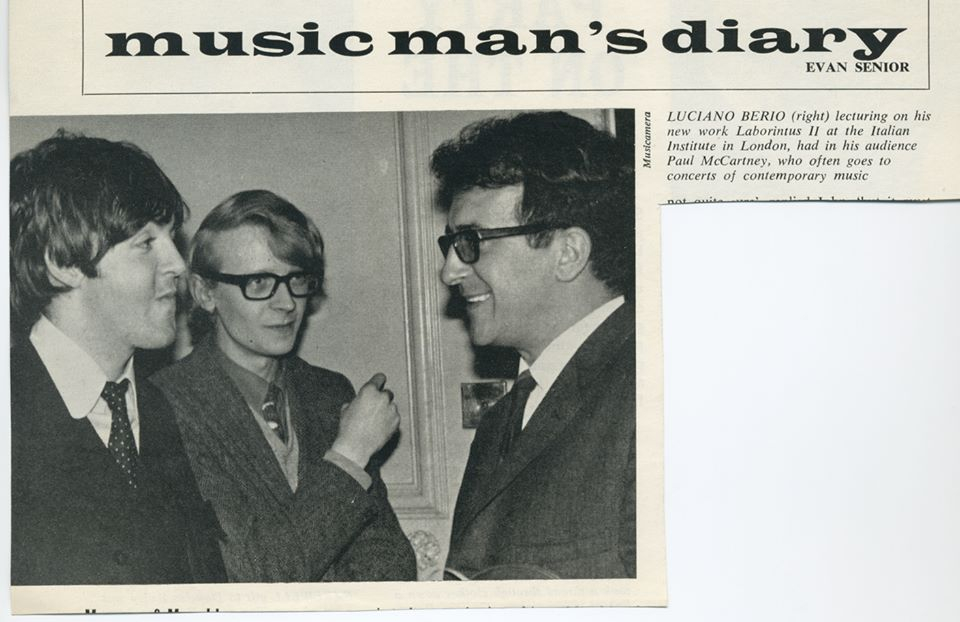ARRANGEMENT OF THE BEATLES BY BERIO IN 1967
In 1967, two years after their composition, the Italian composer Luciano Berio arranged three Beatles songs: Michelle, Ticket to Ride, and Yesterday.
Contemporary composers are often perceived as creators of esoteric music full of false notes, whose productions are inaccessible to mere mortal music lovers.
But "contemporary music" means nothing, it's not a style, and there has never been such a diversity of music written by today's composers.
And the best among them (Luciano Berio being undeniably the major Italian composer of the 1960s–80s) have sometimes made digressions, like here.
It should be noted that Berio was already aware of the limitations of contemporary language expression at his time, which he tried to expand both by looking at traditional music (his Folk Songs, premiered by his wife, the American singer Cathy Berberian), and by revisiting the great repertoire, particularly in his brilliant Sinfonia (1968), a major work whose third movement "In ruhig fliessender Bewegung" heavily borrows from the third movement of Mahler’s Second Symphony, also taking its title (meaning "In calm flowing movement"). Here, Berio makes an amusing incursion into emerging pop-rock music, taking these now immortal tracks, but reinterpreting them in a baroque style. Berio demonstrates a great mastery of baroque vocabulary, as well as its forms, and this renewal, this unexpected encounter, blurs the boundaries between "light" and "serious" music — conventions that have become artificial walls due to the fossilization of one and the rampant commercialization of the other.
These revisitations lead the composer to an ultimate version of Michelle (Michelle II), which is far from baroque shores, introducing elements of the composer’s own language, but still maintaining a connection to the original (the Lennon/McCartney melody remains clearly audible and recognizable) as well as with other musical languages. This awareness of tradition, the fertile play with it, is somewhat of a signature of Italian contemporary music, particularly with Salvatore Sciarrino, who constantly operates on the margins of perception, introducing explicit or subtle references to major works of the past or, in the younger generation, Francesco Filidei, who, in his Fiori di fiori conceived as a tribute to Fiori musicali by Frescobaldi, inserts elements of the famous Venetian Baroque collection like a palimpsest, sometimes apparent, sometimes structuring the work in the background. It can be said in general that, more attuned to sound material, the immediate presence of sound, and the vocal component of music, modern and contemporary Italian composers have better escaped the dogmas that stiffen all music, while constantly maintaining a focus on renewal and the need to negotiate the threshold of modernity in multiple ways. As a result, their music often reaches the listener, no matter how radical it may sometimes be, and remains above all.


